
When Jessie Carney Smith arrived at Fisk University in Nashville in 1965, she says many people there did not know about black literature. Smith, the dean of the library, says, “Many scholars were told that blacks had no history.” But African Americans within the library profession have certainly had a long history, with one of the first librarians of color, Edward C. Williams, joining the American Library Association (ALA) in 1896—20 years after the founding of the Association. And today, African Americans comprise roughly 14,250 of the estimated 190,000 librarians in the United States, according to the US Bureau of Labor Statistics.
American Libraries spoke with five leading African-American librarians about their careers, the changes they have witnessed over the decades, and the current issues in librarianship. While no two people have the same story, all five interviewees note inclusivity as an important theme. They discuss libraries as safe havens, the Black Lives Matter movement, and the history and future of the Association, as well as their legacies within the profession.
As library professor Alma Dawson says, “Even in this day and age, we still have to tell our own stories.”
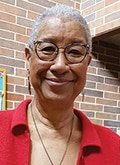
Satia Orange
When Satia Orange, 75, was growing up in the 1950s, she saw what she described as “the grinding work” of her parents, both librarians.
Her father was A. P. Marshall, an ALA Councilor and director of libraries at Lincoln University in Jefferson City, Missouri, and Eastern Michigan University in Ypsilanti. Orange saw him come “home for dinner and then return to the library until 9 or 10 p.m., doing budgets.”
Orange herself later went on to become director of ALA’s Office for Literacy and Outreach Services, retiring from ALA in 2009. “I was pulled into the profession kicking and screaming,” she jokes.
She began her career in education, teaching in Milwaukee in the mid-1960s, when she received a call one day from Virginia Lacy Jones, dean of Atlanta University’s School of Library Sciences and the first—and at that time only—black library school. Jones offered her a fellowship, promising Orange that she would be able to work with young children, something she enjoyed as part of her prior experience working in the library in the Atlanta school system.
It wasn’t until she started attending conferences that Orange began to view librarianship as her profession. As she participated in midwinter meetings and annual conferences, she recalled what her father had told her years ago: “This was a profession that has a national and international impact.”
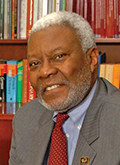
Robert Wedgeworth
Robert Wedgeworth, 80, knows well about the profession’s impact. Wedgeworth became ALA executive director in 1972, at a time of significant financial challenges, with one library publication suggesting that bankruptcy was imminent. But Wedgeworth said he received “some very good advice from friends in the banking industry”; after analyzing the Association’s finances, “they advised me that ALA didn’t have financial problems—it had control problems.”
Wedgeworth balanced ALA’s budget within two years.
During his 12-year tenure, ALA membership increased by more than 25%, and its annual budget more than doubled. The Association also resolved an ongoing building development issue with the construction of Huron Plaza, which has since brought more than $18 million into ALA endowments, and took over operation of National Library Week from the National Book Committee.
Wedgeworth’s forward-thinking approach is also evident in how he applied what he learned from the 1962 Century 21 Exposition in Seattle. He was one of 75 librarians that ALA chose to work at the futuristic Library 21 exhibit, and he was, as he says, “in the first group of librarians to apply computers to library problems” when he became assistant chief acquisitions librarian at Brown University in 1966.
His career in libraries has spanned decades: working as a 14-year-old in libraries over the summer and continuing throughout his four years in college, where a librarian “influenced me to consider librarianship as a career.”
Since leaving ALA, Wedgeworth has served as dean of the School of Library Service at Columbia University in New York and university librarian at the University of Illinois at Urbana-Champaign, and he is currently president of ProLiteracy Worldwide, a nonprofit that promotes adult literacy.
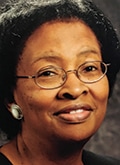
Alma Dawson
As Russell Long professor and professor emerita in library and information science at Louisiana State University (LSU), Alma Dawson, 74, was one of the primary forces in the long-term rebuilding of libraries after Hurricanes Katrina and Rita in 2005. She led Project Recovery, an Institute of Museum and Library Services grant-funded project to educate librarians in south Louisiana to compensate for staff losses after the hurricanes. “It was important to me to make sure that we were connecting what the students were doing in the classroom to everyday experience,” Dawson says. Students recruited for Project Recovery met LSU graduate school requirements and were then admitted into the library program, and all of them went on to professional library positions.
Dawson has also worked to document the history of African Americans in librarianship. “Even in this day and age, we still have to tell our own stories,” she says. “We can stress the importance of figuring out where people are, the kind of positions they have, and the research they’re doing.”
Dawson was, if not recruited to librarianship early, at least welcomed to the library in her youth. “I worked with a librarian in high school who let me help with the library and helped me get scholarships,” she says. “I was the first person in the family to go to college, and it was all on scholarships.”
She didn’t initially work at the library as a student at Grambling (La.) State University, but she was friendly with the librarians there. She also worked in a segregated public school during the Jim Crow era, in the 1960s. “We didn’t really have the resources for students, so we had to raise all the money to buy materials for the library. It was always my goal to find a way to have the resources that the students needed,” she says.

Gladys Smiley Bell
It was Dorothy Porter, curator of Howard University’s Moorland-Spingarn Research Center and the major force behind building it into a premiere collection for the study of African-American history, who encouraged Gladys Smiley Bell, 68, to go to library school. “When I was a student, I didn’t know about ALA and the Black Caucus of the American Library Association (BCALA), so I try to encourage people to join now,” she says.
She’s also worked to help librarians forge connections through professional activities. Bell cochaired the first Joint Council of Librarians of Color (JCLC) in 2006, the first-ever shared conference among ALA’s five ethnic affiliate associations: BCALA, the American Indian Library Association, the Asian/Pacific American Librarians Association, the Chinese American Librarians Association, and Reforma.
With that conference, she says she “was very excited for how we could change the profession in terms of diversity and how we could come together to serve the people,” Bell says. A second JCLC was held in 2012, and a third will take place in Albuquerque, New Mexico, in September.
Bell is now the Peabody Librarian of the William R. and Norma B. Harvey Library at Hampton (Va.) University.
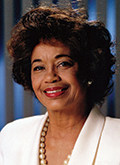
Jessie Carney Smith
Jessie Carney Smith, 87, is not a historian even though some people call her that. “I’m a librarian who has done some historical work,” she says. As dean of the library at Fisk University in Nashville, she has published extensively on African-American history, including three books of biographies of black women and two books of biographies of black men. “I looked for areas that had not been talked about,” Smith says.
After college, she moved to Nashville but couldn’t find a teaching job because of the limited openings in segregated schools. She found a job as a clerk-typist at Fisk University under librarian and writer Arna Bontemps. “I was impressed by his work and the contact he had with other writers and publishers,” Smith says.
She earned a master’s and eventually a PhD in library science, returning to Fisk when Bontemps retired. “When I became familiar with what was then called ‘Negro collections,’ I thought, ‘Why not do some work that would use those materials and promote them to others?’”
And that history is important to having a complete picture. “You may have an interest in one particular topic, and that’s fine,” she says. “But you need to know about the whole of America, not just white but black and Hispanic and other ethnic groups as well.”
Many recent events have been extremely disruptive to communities, ranging from natural disasters to unrest following police shootings or white nationalist rallies. What should a library’s role be in responding to events like these?
Satia Orange: Our Librarian of Congress [Carla Hayden] provided an example of how to respond [as director of Enoch Pratt Free Library in Baltimore]. After the police confrontation, she opened up the library the next day. They were busy because people needed to do what they needed to do but also to understand what was happening in their neighborhood.
In Ferguson, Missouri, the director [of Ferguson Municipal Public Library, Scott Bonner] was brand new, but his training and intuition let him go in and keep the library open and make it the center of the community for information, safety, and resources.
Robert Wedgeworth: Libraries have to be responsive to their constituents, and they need to present themselves as a place where people can find information that helps to explain and understand the current issues affecting their lives. That has been a very important role for libraries over the years, and it will continue to be one. It’s not the social issue itself but that the library can be an active place in helping people to respond to issues as they present themselves.
In the 1960s, librarians were asking what extent they should be active participants in protests and combating certain topics. That continues to be a question raised in the ranks of professionals, and it will always be controversial. Different people will feel different levels of responsibility in dealing with various circumstances, but there will always be a professional role to helping people understand what’s going on in their lives and in their world.
Alma Dawson: First of all, people need information. If they’re just running on emotion, they don’t have the correct info. If we’re talking about Black Lives Matter and other issues of the day, the library has background information that is not just emotional. They have the history right there. When the hurricanes came, people went to the library because that’s where they could connect with family and the community. Librarians can be the right group of people to help.
Gladys Smiley Bell: In my opinion, those protests are political. It’s just appalling to know that things like that are happening today. But libraries can open their doors during times of crisis to provide resources and displays. Schools tend to shut down, but libraries seem to gear up. There is someone out there archiving those events for the future, maybe with the collection of what happens over the years, so that things can be better in the future. Libraries play a role in that because their doors are open to everybody to come and find out for themselves why, who, and what to do about these issues.
Jessie Carney Smith: We have a difficult job to do to help people cope with natural disasters and increasing violence. One has a right to protest, but keep violence out of it. Libraries can help by becoming involved in local dialogue, as we are doing in Nashville. But what works in one community might not work in another. You have to find ways to soften the ugly, tense moments that we have to face. Having grown up in the South, I have seen a lot of ugly and tense moments. We must find a way to deal with the bad as well as the good and let people know that we are dealing with community problems.
Is the profession more welcoming to African-American librarians now than at the start of your career?
Smith: Indeed it is. I grew up in the segregated South, so except for one or two positions in colleges, and maybe in a public library, there weren’t many places where black people could work.
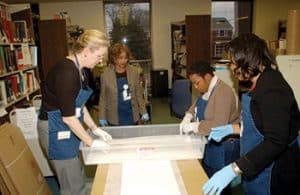
Orange: [In the early 1990s] I think ALA and the profession were looking at African Americans and other ethnic groups from the standpoint of “Let’s let them do something” rather than being truly inclusive. There were people on Council, but not the commitment to being sure that services were provided to those communities. It was only later that the Association and the profession made the commitment to making the profession more inclusive as an intentional action.
In the late 1990s, with the start of the Spectrum scholarship program and Sandra Ríos Balderrama as diversity officer, you could see there was a shift. We had leaders on Council like Barbara Ford, Sarah Ann Long, and E. J. Josey, who made inclusiveness part of their platform. They helped the Association to devote more resources and support to inclusiveness in the profession, by encouraging the activities of the ethnic caucuses, creating the Office for Diversity, elevating the Gay, Lesbian, and Bisexual Task Force into an ALA round table [now known as GLBTRT], and other accomplishments. It blossomed in the early 2000s, and I was really proud of the Association—they were brave steps, and you saw brave folks coming out of them.
I don’t see evidence of the Association moving in that direction anymore, and that’s disturbing to me. The Office for Diversity and OLOS were recently combined, which took the only place in the Association that really dealt with people of color and put them into one little group with different responsibilities. ODLOS has a small staff but is expected to do the things those two offices were doing, which I think is unfair.
I am encouraged by the attempt to reach nonmembers and by the resources the Association has and is working to make available.
Dawson: [At the start of my career in the early 1960s] you were not able to go anywhere—I don’t think we even had medical care. My parents talked a lot about having to use home remedies. LSU was not easy when I worked there, first as a librarian and then when I got my PhD and worked my way from instructor to professor. I think people need to have goals and objectives to move forward. That was what I always tried to do, and what my parents always had us do. Just as important, students need financial assistance.
Bell: Even today, librarians of color have stories of racism, either overt or subtle, with regard to tenure and promotion. When I came up for tenure in the 1990s at Kent (Ohio) State University, I faced opposition and a lot of adversity from people who I thought knew me, with stupid questions about not having enough non-African-American references.
What do you see as the most important current issues related to diversity in libraries? How have they changed over time?
Orange: There was a member push toward being more diverse in terms of resources and representation and giving diverse groups and populations a voice. I think people in the profession are still working that way, but I don’t see ALA as taking those steps. One concern is that ALA is encouraging libraries to have a diverse staff, but it doesn’t have a diverse staff itself.
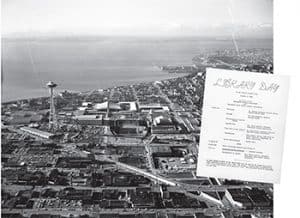
Wedgeworth: There are a lot more opportunities within the field for minorities. The problem is the library field doesn’t reach broadly enough to attract people into the field. We are mostly recruiting people who have worked in libraries or who are relatives or friends of librarians and know what librarians do. We haven’t been able to reach more broadly into undergraduate talent to fill various kinds of positions in libraries. We need students with backgrounds in the sciences and economics, but we don’t tend to reach out to attract those kinds of people.
To counter this, we could do a more aggressive marketing program to attract people to the field and provide more opportunities to experience what it’s like to work in a library before choosing a profession. People need to learn about the career at an earlier age than they currently do. That costs money and time and effort, and we don’t seem to have been willing or able to make that kind of investment.
Dawson: I went to the BCALA conference in Atlanta in August, and people were talking about a lot of the same issues: how you deal with people and how you recruit people. You still have to help young people to understand that librarianship is a viable profession. You do that by networking with students and being in the community early on, through the reading programs and similar efforts. We have to continue to do what we have always done and be the person that people turn to for information.
Bell: One of ALA’s core values is diversity. The profession should try to adapt those kind of initiatives within their libraries as best they can. We have a lot of brilliant students of color out there—for scholarships I support, an essay is required, and they write about issues in public libraries that I don’t even think about, like substance abuse, safe spaces, and dress and religion issues. [What is important to library students of color is] being conscious and aware and listening to what’s being said to them, the profession, and their needs.
Smith: One issue that’s important is that there’s diversity within a race. A black person can grow up in New York and have an entirely different experience than one growing up in Nashville. I don’t know how successful we are in our efforts, but I know libraries and other institutions are trying to promote a fuller view of diversity.
What advice would you give to your younger self or someone just entering the field?
Orange: I think I would have paid attention to what my father was telling me about the profession and the impact you can have as an individual librarian on a whole community. I wish I’d been less career-minded and more profession-minded.
Wedgeworth: I’m not sure because I had a series of very fortunate positions early in my career that shaped what I did later on. It’s not the kind of thing you can advise people about; it simply happened.
Dawson: Have goals and objectives, and understand that—as one of my professors said—not everybody is your friend in your workplace, but you do need to get the job done and be able to get along with people. That’s what I remember from LSU the most. I had a challenging time, but I had a supervisor who would say what he wanted to do, and I would try to figure out how to fit that when other people wouldn’t do anything.
Bell: Sometimes I think I shouldn’t have been as outspoken as I was, because I was told that I was too negative or “rough around the edges.” I would also pursue higher education—I always thought about getting a PhD but never did. I really love books and the book as a piece of art. I’m in the process of researching the illustrations and artists in the Freedomways journal, but the process is slow.
Smith: Librarianship is a service field, so you have to want to give back. If you’re not interested in helping others, this may not be the field for you. You have to be committed to what you do, and finding new ways of doing things and new ways of promoting knowledge. Reach out to people who seem to be lost.
What would you like your legacy to be?
Orange: I did a lot of thinking about legacy when I retired because there were so many things I wanted to do. Our office and other groups worked hard to make things happen, like the Martin Luther King Jr. Sunrise Celebration, the Coretta Scott King Award, and JCLC. The thing I really did was to collaborate and pull groups together.
I think the work of the profession is to give all populations a voice. It’s a hard thing to do, and we have to provide resources for it, but I’m happy I was a part of it.
Wedgeworth: One thing I am pleased to see is that many more librarians are interested in what happens internationally in our field. That didn’t happen earlier in my career, and we have been able to open up more opportunities to be involved through the State Department, affiliation with IFLA [the International Federation of Library Associations and Institutions], and other organizations. That’s been a very positive development. International librarianship has been such a heavy part of my career.
Also, I think librarians have an obligation to write about the field and do research in the field. It’s important for us to define our future and not look to others to define it for us.
Bell: My legacy is with supporting students in library school. That’s why I created a scholarship to help support travel to the BCALA national conferences and JCLC. I would like to endow that fund for library science students.
Smith: I would like to be remembered as a researcher, writer, and deeply committed librarian. That’s why I continue to work well beyond the usual retirement period. I want to be remembered as someone who explored new ways of knowing and reached out to people who wanted to learn more about authors, movements, or something that would make a difference in their lives. I am also a stickler when it comes to administration and writing. That too makes a difference—it guides people to put some structure in things and then reap the rewards. And I believe in education. You never know what turn your life is going to take, so be prepared. Those who are prepared get the best jobs.

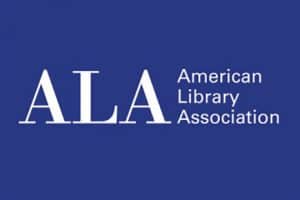
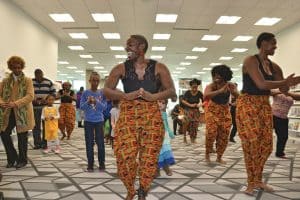
Just FYI, it’s “professor emerita” for a woman. “Emeritus” is for a man.